CentOS 8 Installation with Screenshots (Server with GUI)
Linux is a free and open source operating system developed by Linus Torvalds on September 17, 1991. It is mainly used as server environment. A lot of Linux distributions are present today. Among them, Red Hat Linux is used as enterprise Linux. Red Hat is also known as Red Hat commercial Linux that means Red Hat is a paid service program. CentOS (Community Enterprise Operating System) is another Linux distribution that provides a free and open source, enterprise-class, community-supported server platform functionally compatible with its upstream source, Red Hat Enterprise Linux (RHEL). All the commands and functionalities those are available in Red Hat Enterprise Linux are available in CentOS Linux. The current version of CentOS Linux is CentOS 8. So, in this article, I will show how to install current version of CentOS Linux (CentOS 8) with Graphical User Interface (Server with GUI).
System Requirements for CentOS 8
CentOS 8 can be installed on your server machine if it has minimum 2GB RAM, 20GB disk space and 64-bit CPU architecture because CentOS 8 does not support 32-bit CPU architecture.
8 Easy Steps to Install CentOS 8 Linux
CentOS 8 can easily be installed on your server machine following the below 8 steps:
- Downloading CentOS 8 ISO file and making bootable drive
- Beginning CentOS 8 installation
- Choosing language
- Localization Setup
- Software Setup
- System Setup
- Providing Root Password and User Creation
- Finalizing CentOS 8 Linux Installation
Step 1: Downloading CentOS 8 ISO File and Making Bootable Drive
Before going to start CentOS 8 Linux installation, we have to collect CentOS ISO file and then burn this ISO to a bootable media. The following steps will show how to download CentOS 8 ISO file and how to burn ISO file to a bootable media.
- Go to CentOS official site [centos.org] and click on GET CENTOS menu item and then click on DVD ISO button. Now choose desired ISO from this download page. Alternately, you can follow this link to download CentOS 8 ISO file.
- After downloading ISO file, burn the ISO image in a DVD or in a USB flash drive with any burning software such as Nero[nero.com] or Power ISO [poweriso.com] and then start installation according to the below steps.
Step 2: Beginning CentOS 8 Installation
After downloading CentOS 8 ISO file and making bootable drive, we are now eligible to start CentOS 8 installation. The following steps will show the initial procedures to start CentOS 8 installation.
- Press power button of your server machine and go to boot option menu according to your machine vender. Choose boot from CD/DVD ROM if you use DVD or choose USB Flash Drive if you use Pen drive as bootable media from boot menu.
- After loading BIOS, CentOS 8 boot screen will appear. From boot screen, select Install CentOS Linux 8 option pressing up or down key and then press Enter key.
- After checking a lot of system requirements, a graphical window will appear to choose language.
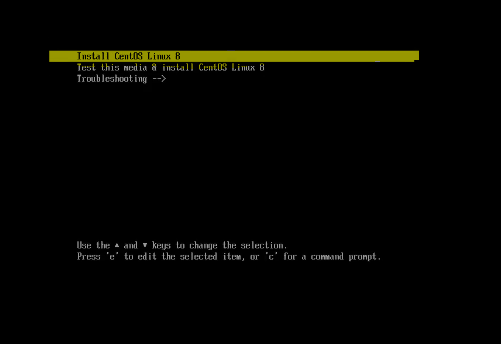
Step 3: Choosing Language
From the first graphical window, choose the language that will be used during installation and then click on Continue button. If you wish to keep English as your server language, just click Continue button because by default English will be selected.
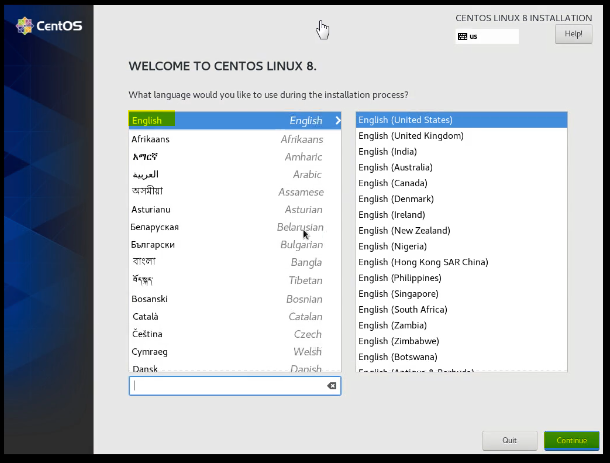
Installation Summery window will now appear. In installation Summery window, we will do all required configuration to setup CentOS 8 Linux. In this window, we will find three panels: Localization, Software and System. In these panels, we will configure basic options those are required to install CentOS 8 Linux properly.
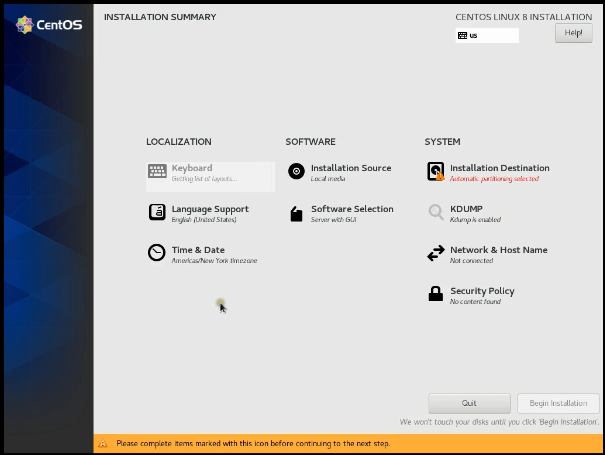
Step 4: Localization Setup
In localization setup, there are three types of configuration. Among them, Keyboard and Language Support will be selected according to previous language setup. Now we need to setup Date & Time. To setup date and time, click on Date & Time icon. Date & Time window will appear.
From Date & Time window, select your region from Region dropdown menu and select your city from City dropdown menu. You are also able to adjust Region and City by clicking your city on the map. Your time and date will be adjusted by selecting Region and City but double check your changed date and time below the map and then click on Done button.
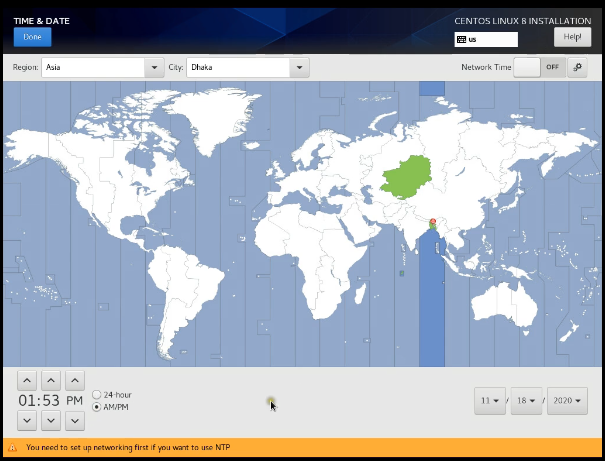
Step 5: Software Setup
In software setup, there are two options. These are:
- Installation Source: Installation source will be automatically selected as Local Media. So, no need to change it.
- Software Selection: Server with GUI will be selected by default in Software Selection option and we will install Server with GUI in this article. So, we will do nothing here. But we optionally can select Development Tools, System Administration Tools and Office Suite options from Add-Ons for Selected Environment panel by clicking Software Selection icon.
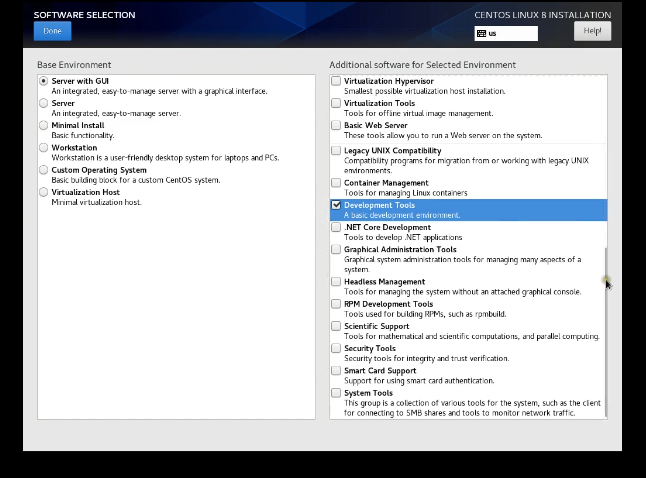
Step 6: System Setup
In System panel, we will only configure Installation Destination because this is the only required configuration in System panel. In Installation Destination, we will define where the CentOS Linux will be installed as well as we will do disk partitioning. Disk partitioning requires system planning according to your application requirements that will be launched on this CentOS Linux. For example, if we want to run Email Server, we will require much space for home (/home) partition. On the other hand, if we wish to run Web Server, we will require much space for var (/var) partition. CentOS Linux requires (minimum) boot, sweep and root partitions but in this installation guide, I will do home (/home) partition also.
Click on INSTALLATION DESTINATION icon from System panel. Installation Destination window will appear. From Device Selection area, click on disk icon which is shown within Local Standard Disks panel. From Storage Configuration options, click on Custom radio button and then click on Done button.
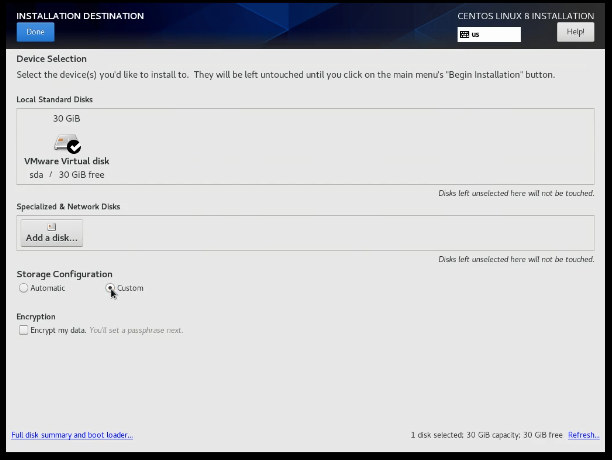
Manual Partitioning window will appear now. In the Manual Partitioning window, we will do required disk partitions (boot, swap and root) for CentOS 8 Linux as well as an optional partition (home). The following steps will show how to do disk partitions on Installation Destination.
- Click on dropdown menu within New CentOS 8 Installation box and choose Standard Partition option.
- Now click on PLUS SIGN (+) located below the New CentOS 8 Installation panel. ADD A NEW MOUNT POINT pop up window will appear. Choose /boot/efi option from Mount Point dropdown menu and type 500 in Desired Capacity input box. By default, MB will be the unit of capacity if you do not mention it. Click on Add Mount Point button now.
- Similarly, click on PLUS SIGN (+) again and choose swap from Mount Point dropdown menu and put desired capacity equal to RAM size in Desired Capacity input box. For example, if RAM size is 1GB, put capacity value 1GB. Click on Add Mount Point button.
- Click on PLUS SIGN (+) and choose (/) root partition from Mount Point dropdown menu and put desired root partition value in Desired Capacity input box. If you wish to assign 10GB for your root partition, put value as 10GB but it must be less than or equal to total disk space-(/boot+swap). Click on Add Mount Point button.
- Click on PLUS SIGN (+) again and choose (/home) partition from Mount Point dropdown menu. Now keep the Desired Capacity filed blank. So, all available disk space will be assigned for /home partition. Click on Add Mount Point button. [/home partition is not necessary but I have done this for teaching how to create more partition besides /root partition. If you wish, you can assign all available space for /root portion.]
- Click on Done button and then click on Accept Changes button from appeared SUMMARY OF CHANGES window. Manual Partitioning and Installation Destination windows will now return to Installation Summery window.
Now click on Begin Installation button from Installation Summery window. CentOS Linux will start installation according to desired configuration.
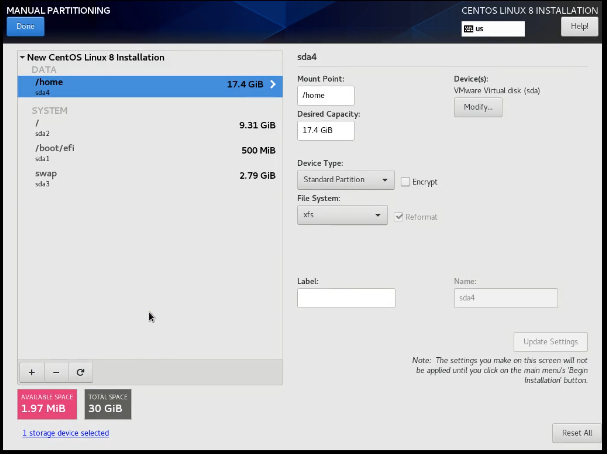
Step 7: Proving Root Password and Creating New User
While installing required services, we have to provide Root Password and we can optionally create another local user at this time. To provide root password, click on Root Password option from USER SETTINGS area. Now provide root password in Root Password input box and confirm password by typing again in Confirm input box and then click on Done button. If you wish to create a local user, click on USER CREATION option and provide required information those will be asked.
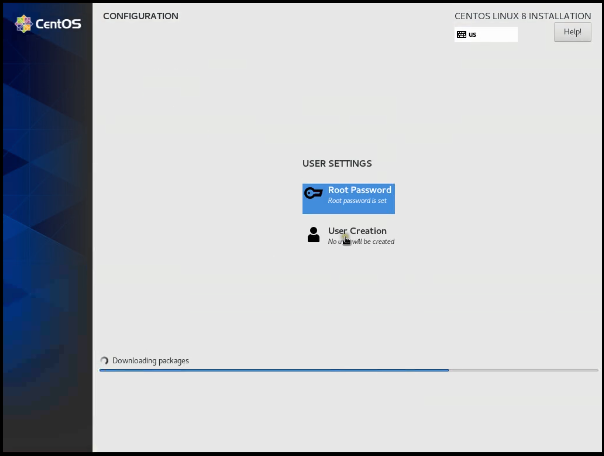
Step 8: Finalizing CentOS 8 Linux Installation
After installing software packages, CentOS will show a complete message and ask to reboot the Server. Reboot the server by clicking Reboot button.
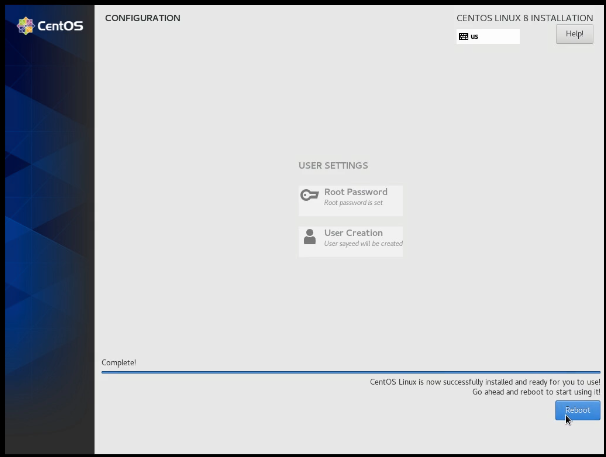
After rebooting, CentOS will start Initial Setup. In Initial Setup page, it will ask to accept license. So click on License Information and then click on I accept the license agreement checkbox and click Done button. Now click on FINISH CONFIGURTION button.
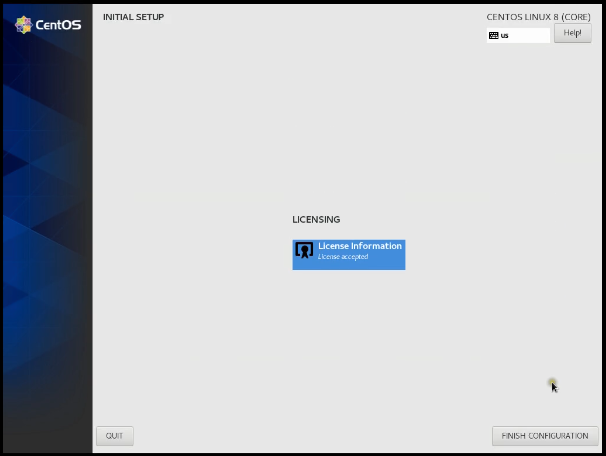
CentOS 8 Linux will ask to login to system. You will find that created local user is listed here if you provide information at the time of package installation. You can login with the local user credential but we will now login with root (administrator) user. So, click on Not listed link and it will ask you to provide your known username. Put root in Username input box and click on Next button. Now it will ask you to provide password for root user. Put your root password that you provided at the time of package installation and click on Sign In button.
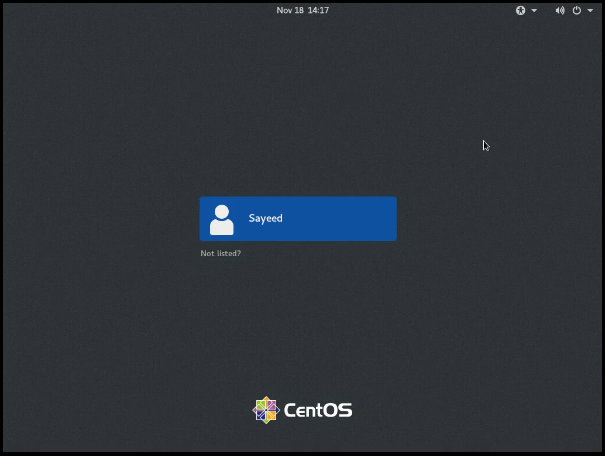
You are now logged in as root user but before getting your Desktop, you will find some gnome initial setup pages. Here, do nothing just click Next or Skip button and finally you will find the Start using CentOS Linux button. Click on this button and you will find your Desktop now.
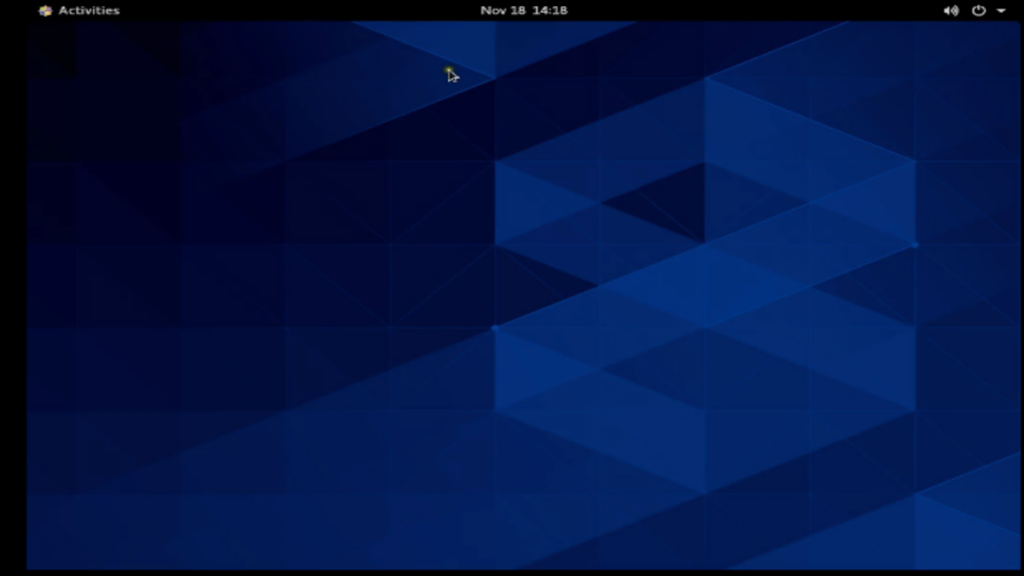
How to install CentOS 8 Linux with step by step screenshots has been discussed in this article. I hope you will now be able to install CentOS 8 Linux Server successfully. However, if you face any problem to install CentOS 8, feel free to discuss in comment or contact me from Contact page. I will try my best to stay with you.
Why not a Cup of COFFEE if the solution?

